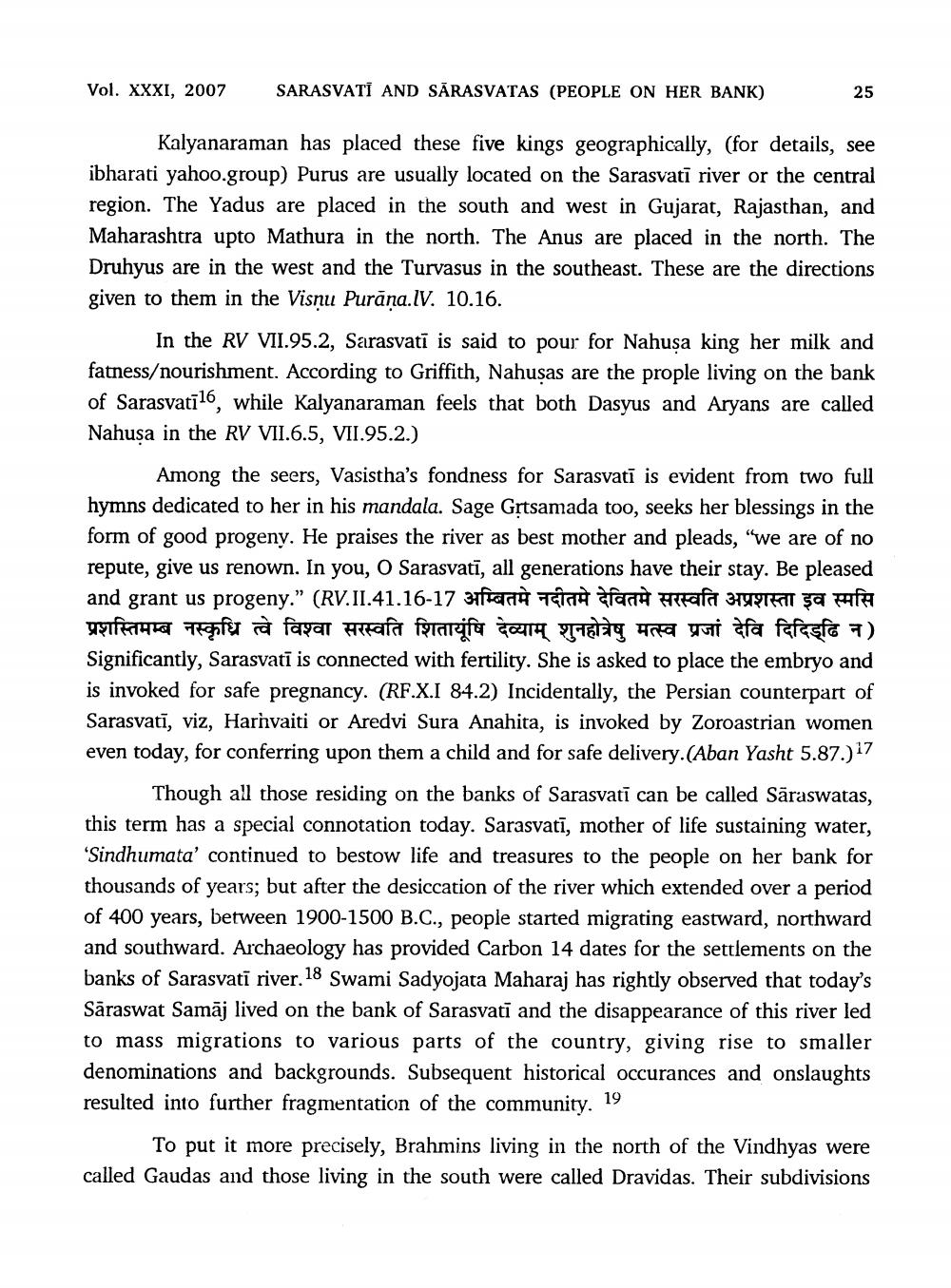________________
Vol. XXXI, 2007
SARASVATI AND SĀRASVATAS (PEOPLE ON HER BANK)
25
Kalyanaraman has placed these five kings geographically, (for details, see ibharati yahoo.group) Purus are usually located on the Sarasvati river or the central region. The Yadus are placed in the south and west in Gujarat, Rajasthan, and Maharashtra upto Mathura in the north. The Anus are placed in the north. The Druhyus are in the west and the Turvasus in the southeast. These are the directions given to them in the Visnu Purana.IV. 10.16.
In the RV VII.95.2, Sarasvati is said to pour for Nahusa king her milk and fatness/nourishment. According to Griffith, Nahusas are the prople living on the bank of Sarasvatīl6, while Kalyanaraman feels that both Dasyus and Aryans are called Nahusa in the RV VII.6.5, VII.95.2.)
Among the seers, Vasistha's fondness for Sarasvati is evident from two full hymns dedicated to her in his mandala. Sage Grtsamada too, seeks her blessings in the form of good progeny. He praises the river as best mother and pleads, "we are of no repute, give us renown. In you, O Sarasvati, all generations have their stay. Be pleased and grant us progeny." (RV. II.41.16-17 311ach in afara hrafa 3799 in ga A प्रशस्तिमम्ब नस्कृध्रि त्वे विश्वा सरस्वति शितायूंषि देव्याम् शुनहोत्रेषु मत्स्व प्रजां देवि दिदिड्ढि न) Significantly, Sarasvatī is connected with fertility. She is asked to place the embryo and is invoked for safe pregnancy. (RF.X.I 84.2) Incidentally, the Persian counterpart of Sarasvatī, viz, Harhvaiti or Aredvi Sura Anahita, is invoked by Zoroastrian women even today, for conferring upon them a child and for safe delivery.(Aban Yasht 5.87.)17
Though all those residing on the banks of Sarasvati can be called Sāraswatas, this term has a special connotation today. Sarasvatī, mother of life sustaining water, 'Sindhumata' continued to bestow life and treasures to the people on her bank for thousands of years; but after the desiccation of the river which extended over a period of 400 years, between 1900-1500 B.C., people started migrating eastward, northward and southward. Archaeology has provided Carbon 14 dates for the settlements on the banks of Sarasvati river. 18 Swami Sadyojata Maharaj has rightly observed that today's Sāraswat Samāj lived on the bank of Sarasvati and the disappearance of this river led to mass migrations to various parts of the country, giving rise to smaller denominations and backgrounds. Subsequent historical occurances and onslaughts resulted into further fragmentation of the community. 19
To put it more precisely, Brahmins living in the north of the Vindhyas were called Gaudas and those living in the south were called Dravidas. Their subdivisions




